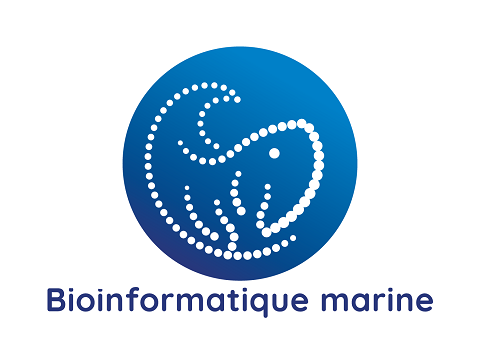Barcoding COI B.azoricus MoMARSAT
6 DNA sequences of Bathymodiolus azoricus from COI barcode analysis, Capelinhos Lucky Strike area, Mid-Atlantic Ridge.
| Data accessChemin d'accès | /home/ref-bioinfo-public/ifremer/lep/bazoricus-momarsat |
| Date(s)Date(s) |
|
| Author(s)Auteur(s) | Alfaro Lucas Joan Manel
(Department of Biology, University of Victoria, Victoria, British Columbia, Canada)
Martin Daniel (Centre d’Estudis Avançats de Blanes (CEAB-CSIC), Blanes, Catalonia, Spain) Michel Loïc (Université de Liège, Liège, Belgium) Cathalot Cecile (Université de Brest, Ifremer, CNRS, Unité BEEP, Plouzané, Bretagne, France) Laes Agathe (Université de Brest, Ifremer, CNRS, Unité BEEP, Plouzané, Bretagne, France) Fuchs Sandra (IFREMER) Sarrazin Jozee (IFREMER) |
| Contact(s)Contact(s) | IFREMER
|
| SourceSource |
Ifremer - Laboratoire Environnement Profond |
| LineageGénéalogie |
Study area, sampling and sample processing. Capelinhos was revisited during the Momarsat 2014 (https://doi.org/10.17600/14000300 ) and 2015 (https://doi.org/10.17600/15000200 ) cruises on board of the R/V Pourquoi Pas? which visually inspected chimneys, diffuse flow areas and the periphery using the ROV Victor6000. In 2014, three temperature probes were deployed on a large-size mussel bed on a diffuse flow area at the base of one edifice. The probes registered temperatures every 15 minutes for 10 9 months, form the 24th July 2014 to the 20th/23rd April 2015. In 2015, prior to faunal sampling associated to mussels, sulfide (ƩS) and iron (Fe(II)) concentrations were measured in situ using the chemical analyzer CHEMINI (Vuillemin et al. 2009) over the targeted mussel bed. Samples were collected using Victor6000's manipulator arm (three to four grabs per sample) and placed in isotherm boxes. After grabs, a suction sampler was used on each sampling area to collect all remaining fauna. Sampled area was estimated analyzing Victor6000's videos with the software ImageJ. Once on board, samples were sieved through 250 µm (directly fixed in 96° ethanol) and 20 µm (fixed with 4% buffered formalin, then in 96°ethanol, not considered in this study) mesh-sizes. Individuals were sorted, identified to the lowest taxonomic level possible using stereo- and binocular microscopes (except for mussel specimens, which were barcoded to identify the species), and counted (only individuals with complete anterior regions). Meiofaunal organisms (e.g., copepods and nematodes) found in the macrofaunal samples were included in the analyses. Genetic analyses. We used the mitochondrial cytochrome oxidase I (mtCOI) to identify mussel specimens. In short, we extracted 10–50 mg of mussel tissue to be digested until total digestion with proteinase K at 60ºC in 0.5 ml pK-CTAB lysis buffer (containing 2% CTAB (Cetiltrimetilamina), 1 M NaCl, 1% PVP (Polyvinylpirrolidina), 20 mM EDTA pH8, 100 mM Tris-HCl pH 8, 0.1 mg mL-1 proteinase K). Then, we: (1) extracted genomic DNA using the phenol/chloroform protocol, (2) precipitated it with Isopropanol and washes with ethanol 70%, (3) resuspended and stored the pellet at -20°CºC in molecular quality steril water until amplifications, (4) obtained partial sequences of the mtCOI gene using the specific primers BathCOI-F 5’-GTGGTCTGGAATAATTGGAAC-3’ and BathCOI-R 5’- ATAAAAAGATGTATTRAARTGACG-3’ (following Olu-Le Roy et al. (2007)), and (5) amplified the DNA as follows: an initial step of denaturation at 94ºC for two minutes, five cycles of 35s/94ºC, 35s/48ºC and 70s/72ºC, thirty-five cycles of 35s/94ºC, 35s/52ºC, 70s/72ºC, and an final elongation at 72ºC for 10 min. We perform PCR reactions into a 25-ml reaction volume (1X PCR buffer, 2,2 mM MgCl2, 0.5 mM of each dNTPs, 0.55 µM of each primer, 0.02 U of Taq polymerase (GoTaq Promega), and 20 ng genomic DNA). The PCR products were purified and sequenced the 3730XL Sequencer by thermofisher (Macrogen Europe, The Netherlands) following the manufacturer’s protocol. |
| ConstraintsContraintes |
|
| Spatial informationsInformations géographiques |
|
Citation proposalCiter la ressource
Alfaro Lucas Joan Manel, Martin Daniel, Michel Loïc, Cathalot Cecile, Laes Agathe, Fuchs Sandra, Sarrazin Jozee (2023).Barcoding COI B.azoricus MoMARSAT.IFREMER
https://doi.org/10.12770/72f13a1b-3770-4108-828c-b12aa4249987
When using this dataset in a publication, also cite the related work(s) with:
Alfaro Lucas Joan Manel, Martin Daniel, Michel Loïc, Cathalot Cecile, Laes Agathe, Fuchs Sandra, Sarrazin Jozee (2022). Environmental variables, species abundance and stable isotopes of species associated to Bathymodiolus azoricus mussel assemblages at the Capelinhos hydrothermal structure (Lucky Strike vent field, Mid-Atlantic Ridge) . SEANOE . https://doi.org/10.17882/90421
accessData
OverviewsAperçus

)))

